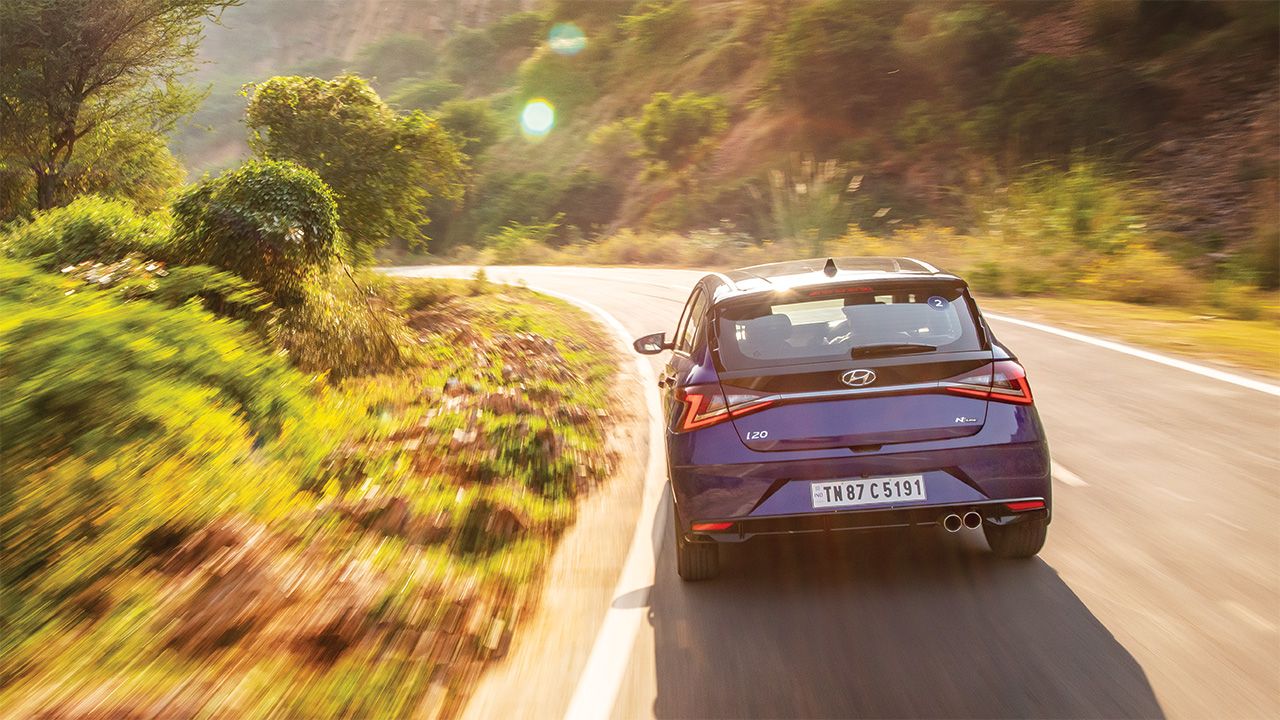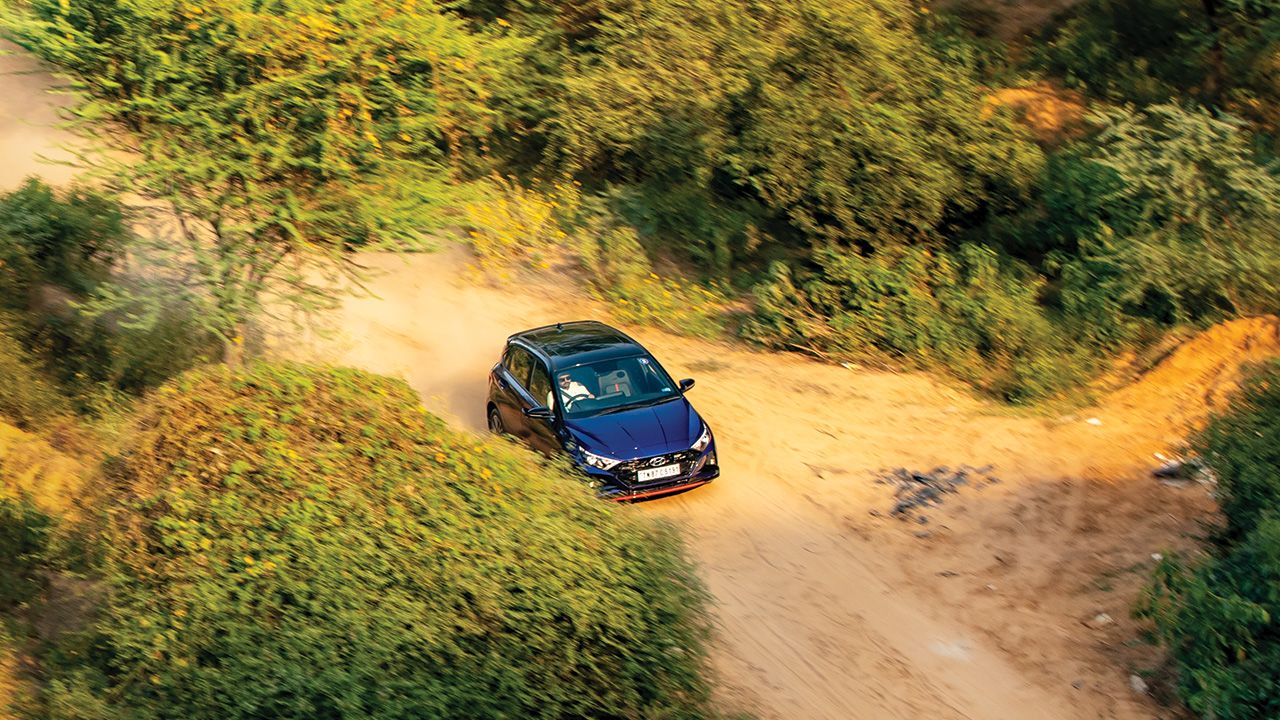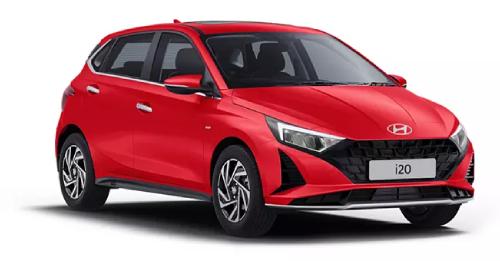With the i20 N Line, Hyundai has revived the hot hatch segment. But what makes the i20 N Line so appealing? We drive it to find out.
Anyone who is even remotely interested in the world of automobiles must have heard the term ‘hot hatch’. But what is a hot hatch? Well, if you ask motoring enthusiasts, they will tell you that hot hatches are some of the most sought-after cars in the world, given the combination of size, performance, and look they offer. But what is it about a hot hatch that makes it so special? What makes it offer the kind of driving experience that is craved by enthusiasts around the world? And, most importantly, are they worth the hype and the extra money that they demand. We often get these questions from the non-enthusiast types, from our friends and acquaintances. So, for this feature, we decided to take the i20 N Line and drive it in a variety of conditions in an attempt to answer the questions.
The Concept
First of all, let us try to understand what qualifies as a hot hatch. Just putting on a fancy body kit and some stickers on a standard car won’t do. A true hot hatch needs to have mechanical changes as well, especially those that affect the way the car drives. Of course, visual touches to make a hatchback look sportier are always welcome. And if the exhaust can be made to sound a bit fruitier, it is sure to engage enthusiasts more and, more importantly, give the car a unique identity.
Now, it goes without saying that a hot hatch needs to be based on a very competent basic platform, which means that it should have a stiff chassis and a powerful powertrain. It’s only when these things are in place that a successful car, aimed at enthusiasts, can be created. Enthusiasts are fickle beings, and they tend to be very particular about these details. Therefore, carmakers need to be extra careful to ensure that their products have the right qualities to offer.
The Offering
Hyundai is not new to the world of hot hatches. In fact, its i20 N and i30 N hatchbacks are highly regarded in Europe. what’s more, the i20 N regularly wins comparison tests and is regarded as one of the best-driving hot hatches in the world. Moreover, the success of its World Rally Championship program – winning the 2019 and 2020 WRC championships – has given Hyundai vital insights and technological abilities to develop performance cars with sporty appeal.
Naturally, the start of a good hot hatch has to be the chassis, and in this case, the underlying platform is an absolute cracker. The standard i20, now in its third generation in India, excels here, for it’s based on a stiff platform, which makes it a treat to drive. Its ability to deal with bad roads, high-speed stability, and low centre of gravity makes it a very competent platform, which also allows the interior to be spacious.
To make an already sharp design even sharper, the i20 N Line gets lots of distinctive touches, both inside and out. The exterior, for instance, gets a sharper front bumper, which makes the sporty intention of the N Line conspicuously evident. It also gets red-coloured accents all around, including the front bumper and side sills, along with big N Line badges – one look at them, and you know that you are in the presence of not an ordinary i20 but a rather extraordinary one. Other design changes include a new N-badged wheel design and a special dual-tip exhaust.
The interior too gets an upgrade. We absolutely love the new steering wheel – the unique N-spec wheel is brilliant to hold – and the large paddle shifters make it very easy to shift, even during a turning manoeuvre. Similarly, the N-spec gear knobs look terrific and, again, are very handy to use.
One of the highlights of the N Line is the seats, which provide terrific support and are extremely comfortable, even during long hauls. It seems that Hyundai has nailed the design of the hot hatch – it looks distinctive, has enough sporty touches, and stands out on the road from its regular sibling. But how does it drive?
Stiff and Fast
Well, in search of the answer, we drove the i20 N Line on some of our favourite twisty roads, took it to an expressway journey, and quickly tested it on a dirt stretch. The idea was to test the mettle of this sporty hatchback in all kinds of conditions.
First, on one of our favourite twisty stretches, the N Line was an absolute hoot to drive. The stretch has a number of blind corners, crests, drops, and fast-flowing corners. We began early in the morning, when the road was empty and let the N Line loose on the road – it was an absolute revelation to drive. The stiffer suspension immediately made the car hug the road. This also means that you can carry a lot more speed into corners – whether it’s a crest or a drop, the car remains completely unfazed at all times. In fact, you can carry so much speed into a corner that a mere peek at the speedo while cornering can be shocking.
The steering, which has been re-tuned, also helps – it’s heavier, offers more feel, and gives you clear feedback from the front wheels. And, while the retuned exhaust of the N Line isn’t overly loud, the bassy thrum of the three-cylinder engine adds to the overall driving appeal and gives the car a lot more character.
Driving the N Line on the expressway revealed that despite its small size, it remains a consummate mile muncher, which can be easily used for long road trips. With the new suspension tuning, its high-speed stability is even better. Cruising at three-digit speeds all day is a breeze, and why not? After all, its 1.0-litre engine, at 118bhp, provides more than enough power, even with a full load of passengers.
Lastly, just for a laugh, we took the N Line onto a dirt track with flowing fast turns. And while we weren’t really driving it WRC style, the N Line still tackled the dirt track with aplomb, providing great feedback. The inherent balance of the chassis allowed us to steer the car with the throttle, as we had fun throwing up the dirt all around the car. In fact, given the success of the i20 in the WRC, we think it would be a good idea for Hyundai to launch a couple of cars in the Indian rally championship, powered by a 1.6-litre turbocharged engine – it would certainly give the existing cars in the championship a run for their money.
So, back to our original question – what is it about a hot hatch that makes it so special? First, it’s the brilliant driving experience they offer. A stiff suspension, a retuned steering, and a fast pace, all come together to make a hot hatch engaging and fun to drive while adding to its overall character. No wonder then that a hot hatch naturally appeals to the enthusiast inside us. Second, the visual appeal of a sharp-looking hatchback, with tasteful upgrades, and a nice sounding exhaust significantly add to the desirability of the car. But, most of all, we think, it’s the political incorrectness of a hot hatch – a small car going insanely fast – that really attracts people to it. A small car that can go fast is something that we can all enjoy and appreciate. So, here’s to the continued longevity of hot hatches.
Read more:
Hyundai i20 N Line, Track Test
Hyundai i20 N Line vs VW Polo 1.0 TSI vs Fiat Palio 1.6 S10: Comparison






























Write your Comment